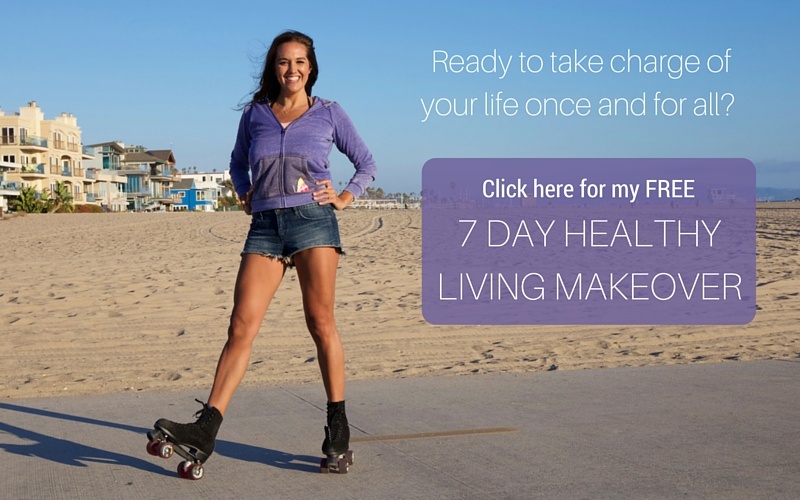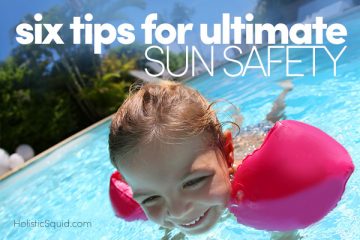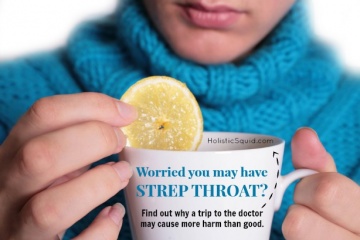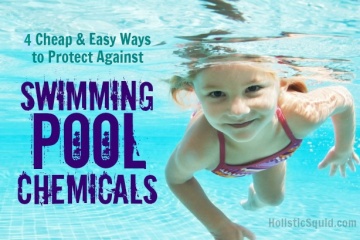
Dust off the BBQ, practice those cannon balls, and – whatever you do – don't forget the sunscreen. *wink wink* As a sun-loving half-Filipino gal, I'm not convinced that solar rays are the primary cause of early wrinkles or skin cancer. But in the name of sun safety, most folks I know prefer to slather on protective creams before spending time outdoors.
The hazards of sunblock
Sunscreen comes in many types and formulations. And while a dab here and there during peak sunshine hours can do a lot of good, there's also benefits in (sometimes) ditching the high SPF lotion. Before you become a hardcore sunblock worshipper, consider this:
Sunshine provides much needed vitamin D. Vitamin D is synthesized in your body when ultraviolet light hits your skin. This is how nature intended you to get this nutrient (even though store-bought cow's milk seems to take most of the credit these days). Sunscreen blocks UV rays and folks who use excessive sun protection are more like to run low in vitamin D.
Vitamin D protects you from osteoporosis, colon cancer, autoimmune disease, and SKIN cancers. Which could explain why sunscreen use may be linked to an increased risk of melanoma skin cancer. Or why outdoor workers report lower rates of melanoma than indoor workers.
This ultra important vitamin also promotes bone growth in kids and fortifies their immune systems. While the average person needs about 10-15 minutes of direct sun exposure to meet their sunshine vitamin requirement, human beings evolved outdoors – living and working by the sun – and are wired to expect plenty of daily sunlight. Chances are we could all use more sun and a little more vitamin D.
Do you really know what's in your sunblock? Common ingredients such as oxybenzone, methoxycinnamate, PABA, benzophenone, parabens, and triethanolamine – huh? As it turns out, these nasty synthetic chemicals can stir up rogue cellular replication or disrupt hormone function. Even titanium dioxide (TiO2), found in many natural sunscreens, has been shown to cause DNA damage in human cells.
Vitamin A, often listed as “retinyl palmitate” on the ingredient label, is in roughly a one third of sunscreens because manufacturers believe that it slow aging. However recent data show that lesions and tumors develop sooner on UV-exposed skin when it's coated with cream contains vitamin A.
Zinc oxide – once recognized as a chalky and white sunblock – offers the best sun protection, even though it's still not perfect. Zinc oxide is stable in sunlight and it gives more protection from UVA rays than titanium oxide. These days, you can find zinc oxide in nano particles, which means sunscreen with zinc oxide has less of a white tint.
Six tips for sun safety
Great. It looks like sunscreen is something you can't live with and you can't live without. What's a mom to do about all those rays?
- Burn is bad. While experts may disagree about the pros and cons of sunshine, the bottom line is that you should avoid sun burns which are directly linked to melanoma and severe sun damage.
- Choose your weapon: Sunscreen with micro-ionized zinc is the safest substance that keeps free radicals at bay while also working wonders at blocking sun. Don't give into temptation of those invisible spray-on sunscreens that are neat and convenient but also toxic. By the way, the number of SPF is not an entirely accurate measure of how well your creams with do the job. Choose at least SPF 15, but more for especially fair skin or long days. Reapply the block regularly for usual summer activities involving sweat, water, and extended sun exposure. I recommend Badger, an all-natural, great smelling sunscreen made with micro-ionized zinc, natural emollients, and essential oils.
- Multi-task. This ability was innately given to you as a mom, so when it comes to sun protection, make sure to put it to use with more than one method of sun protection: big brimmed hats (if your child will keep them on), breathable light colored, cotton clothing, and lots of shade with umbrellas and tents will help.
- Timing is key. Big hot sun-glaring hours should be avoided when possible. The safest summer sun is before 9am and after 4pm. But if your beach picnic is at noon, just go equipped with lots of sunscreen, hats, and shade options as well as cool water and fruit to stay hydrated.
- Oh baby! For the most part, keep your baby out of direct sun and refrain from sun block until 6 months of age. Unless mom was deficient, baby is born with a liver full of vitamin D which is a fat soluble vitamin stored in the body, and will continue to get some D if breastfeeding.
- Still scorched!?! Despite your best efforts, your kiddos may still come home cotton-candy pink after a day at the beach. After a cool bath or shower, apply fresh aloe directly to the burn and have them drink lots of fluids. Now you know for next weekend to up that SPF, get a wider brimmed hat, and hit the beach well after lunch instead of at noon.
How do you keep your family in balance with healthy sun exposure in the summertime?












Leave a Reply